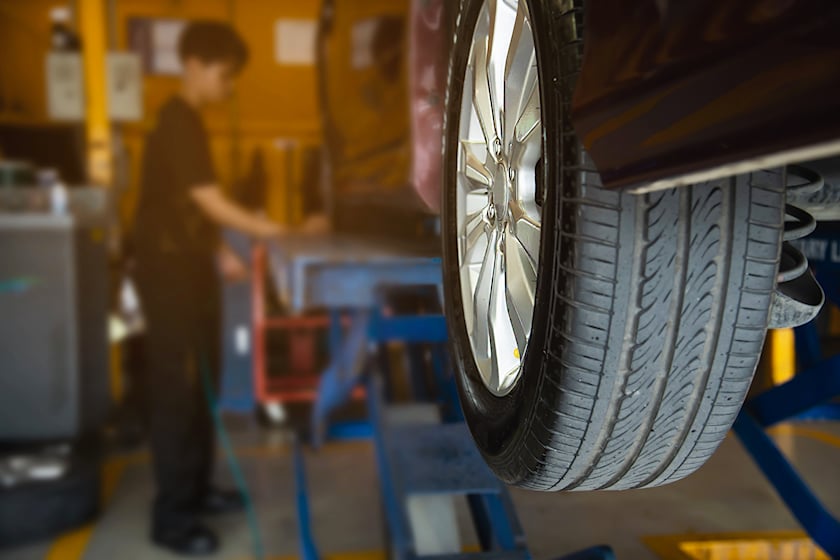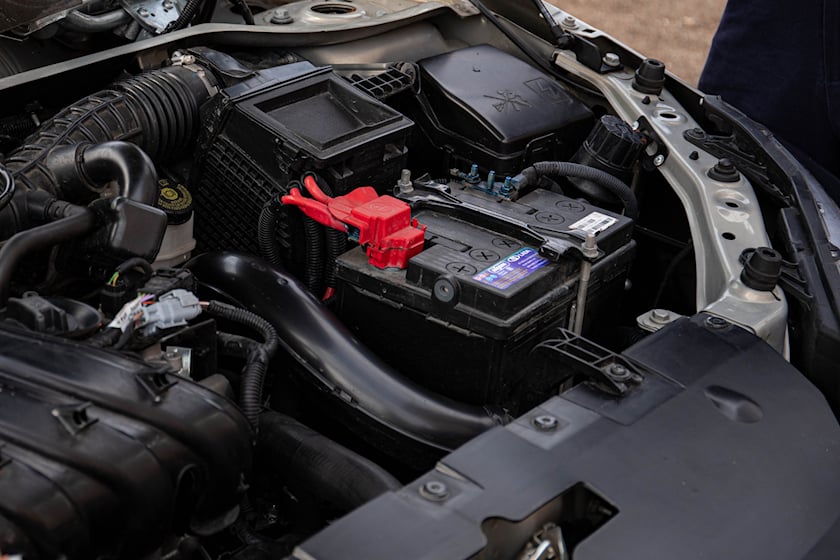Is warming up your car before you drive really necessary, or is it just a myth?
Dealing with cold starts and wondering how long you should let your car idle to warm up has been a much-debated topic in motoring circles for ages. The basic premise is that when you first start your vehicle, the engine is cold and not functioning at an optimal temperature just yet, hence the term 'cold start'. When you start your car, you may notice the engine idling at a higher rpm than usual for a short while before it settles down - this is totally normal and is part of the process to get everything up to temperature and lubricated.
Car owners, especially those living in the colder parts of the US, may be wondering if they need to warm up their car before driving off, especially after starting up the car in really cold weather. And if so, how long should you let your car warm up for? Opinions have traditionally been split between those who believe that idling is bad for your car and those who feel warming up your vehicle to the correct temperature is vital to extend the lifespan of its engine. There are valid points in both of these arguments, so we'll break it down and explain the reasons why it's safe to simply drive your car after starting, some reasons why starting your car in cold weather can be difficult, and everything in between.
Getting your car up to the perfect operating temperature by letting it idle for a while is a concept carried over from the days when most cars made use of carbureted engines which were notorious for cold start issues. These engines make use of manual fuel and air adjustments and use what is called a choke to restrict airflow during cold starts, which in turn creates a fuel-rich mixture ready for combustion. This is because cold air is denser than warm air and makes a lean air to fuel mixture. New fuel-injected engines use electronic sensors to automatically adjust the air-fuel ratio so that the car will start, even on the coldest of mornings, and will continuously adjust this ratio until the vehicle reaches its optimal operating temperature.
Another thought that has carried over from older engines suggesting that warming up your car is vital is that when the engine is cold, the gasoline takes longer to evaporate, and when too much is introduced into the combustion chamber, excess fuel can make its way onto the cylinder walls. Gasoline is a solvent and can wash away the protective layer of oil that keeps the cylinder walls lubricated between piston strokes. Without the friction protection offered by motor oil, the cylinder walls can eventually become scored and damaged. While this is a true concern, most modern engines are fully lubricated within twenty seconds of start-up, ensuring sufficient lubrication..
So, the question remains - should you warm up your car before driving off? According to most experts and manufacturers, modern vehicles don't need a dedicated warm-up time and starting your car and spending twenty to thirty seconds adjusting mirrors and buckling up is usually more than enough. In extremely cold weather, most manufacturers recommend driving gently for the first six to ten minutes but do not recommend idling your car for extended periods to warm it up. Many performance car drivers and motoring enthusiasts still prefer to spend a few minutes getting their engine up to temperature before driving off, even if it's not mechanically a requirement.
We've established that modern engines don't require extensive idling once you start it up, and there is more evidence to consider when asking if idling is bad for your car. When you're idling, the engine continues to use gas and run systems such as the climate control and battery. But since it's not running at optimal temperatures, it may not combust the fuel fully, which results in residue in the exhaust system. Additionally, extended idling can lead to engine wear and potential damage, but it will also negatively affect the overall economy of your engine, wasting gas. But why else is it bad to leave your car running for long periods of time?
According to experts and various tests and experiments run, cars that idle for up to ten minutes see a massively significant reduction in fuel economy of 19 percent as opposed to those with shorter idle times. Not only does this mean that you'll be spending more money on fuel, but you're also emitting more carbon dioxide into the air. According to the US Department of Energy, idling cars use up an additional three billion gallons of fuel every year and also release 30 million tons of carbon dioxide pollution.
There can, however, be times when your car is too cold to start, and the reasons for this can range from ignition and electronic issues to fuel-line issues. Below we list some of the main reasons for modern cars not being able to start in cold weather:
As we've established, modern cars don't require a warm-up time or extended idling to be ready to drive, but you may be idling your car for other reasons. This may include trying to warm up the cabin, get the window defroster working, or remove ice from your car. While these are valid reasons, remember that extended idling isn't good for your car or for the environment, and should definitely not be done in an enclosed garage where fumes can build up and be potentially deadly.
Take the time to clear your windows of ice before starting up, and once you can see out of the window, rather get moving as this will help warm up your car faster and get the heat in the cabin going.
Unless you're driving a car with a carburetor from thirty-odd years ago, there is no need for you to idle your car for extended periods of time to warm up the engine. Modern vehicles are equipped with the technology to lubricate and reach a functional temperature within twenty seconds or so, which makes it safe to drive off. Manufacturers and experts in the field recommend driving off gently and spending the first few minutes of your drive avoiding excessive throttle inputs until the vehicle naturally reaches optimal functioning temperature. This is also the best way to warm up your car faster as hitting the road allows the engine to heat up quicker than when it is simply idling. Remember that the drawbacks of extended idling include burning oil faster, more frequent servicing, draining of batteries, higher fuel consumption, and more harmful emissions.
The best way to get your car up to operating temperature is to drive at moderate speeds and rpm until the car indicates it is at prime temperature. If you're looking for tips and tricks to warm up the cabin in advance, this is also your best bet as you'd be able to get the heat working quicker. Alternatively consider a vehicle with remote engine start or a cabin pre-heating system such as those found in some of the newest cars and EVs.
Engine block heaters are used to warm the engine block and oil to prepare the car for start-up in extremely cold conditions. Utilizing an engine block heater can protect your vehicle from other cold start issues and help mitigate the negatives of extended idling. It prevents fluids from freezing. These are commonly found on trucks like the Ford F-250 or the Chevy Colorado for around $100.
If you follow manufacturer instructions and keep up with general maintenance, there should be no reason why your car's engine should suffer any additional wear and tear from living in a colder climate. Some basic preventative tips include checking your antifreeze levels and oil quality/levels regularly, and parking under cover where possible.
Modern diesel engines run on advanced ECUs and sensors that do not require one to idle for extended periods; in fact, diesel engines require no more warming up than their gas counterparts. Idling a cold diesel engine can cause issues like clogging up diesel particulate filters faster than usual and causing excess soot buildup in the intake manifolds.



